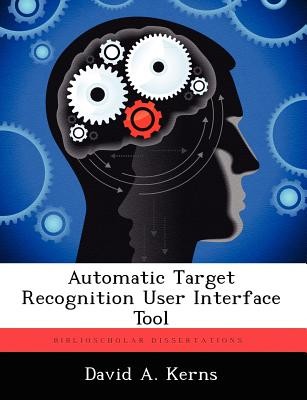
- We will send in 10–14 business days.
- Author: David A Kerns
- Publisher: BiblioScholar
- ISBN-10: 1249593956
- ISBN-13: 9781249593959
- Format: 18.9 x 24.6 x 0.8 cm, minkšti viršeliai
- Language: English
- SAVE -10% with code: EXTRA
Reviews
Description
A computer tool to aid in selecting the best Automatic Target Recognition (ATR) algorithm is developed. The program considers many quantifiers, accepts user-defined parameters, allows for changes in the operational environment and presents results in a meaningful way. It is written for Microsoft Excel. An ATR algorithm assigns a class label to a recognized target. General designations can include "Friend" and "Foe." The error of designating "Friend" as "Foe" as well as "Foe" as "Friend" comes with a high cost. Studying each algorithm's error can minimize this cost. Receiver Operating Characteristic (ROC) curves provide only information on the probabilities given a system state of declaring up to three class labels: "True," "False" or "Unknown." Other quantifiers, including an alternate ROC curve, are developed in this study to provide information on the probability of a system state given any of multiple declarations, which is more useful to the user. Sensitivity to prior probabilities, suggestions for user-defined parameters and areas for future research are identified as the User Interface Tool is described in detail in this thesis.
EXTRA 10 % discount with code: EXTRA
The promotion ends in 22d.05:38:25
The discount code is valid when purchasing from 10 €. Discounts do not stack.
- Author: David A Kerns
- Publisher: BiblioScholar
- ISBN-10: 1249593956
- ISBN-13: 9781249593959
- Format: 18.9 x 24.6 x 0.8 cm, minkšti viršeliai
- Language: English English
A computer tool to aid in selecting the best Automatic Target Recognition (ATR) algorithm is developed. The program considers many quantifiers, accepts user-defined parameters, allows for changes in the operational environment and presents results in a meaningful way. It is written for Microsoft Excel. An ATR algorithm assigns a class label to a recognized target. General designations can include "Friend" and "Foe." The error of designating "Friend" as "Foe" as well as "Foe" as "Friend" comes with a high cost. Studying each algorithm's error can minimize this cost. Receiver Operating Characteristic (ROC) curves provide only information on the probabilities given a system state of declaring up to three class labels: "True," "False" or "Unknown." Other quantifiers, including an alternate ROC curve, are developed in this study to provide information on the probability of a system state given any of multiple declarations, which is more useful to the user. Sensitivity to prior probabilities, suggestions for user-defined parameters and areas for future research are identified as the User Interface Tool is described in detail in this thesis.


Reviews